This article contains affiliate links that may earn us a commission at no extra cost to you. Read our Disclosure for more. Thanks for your support!
Last updated on July 15th, 2024 at 10:05 am
Looking to plan the perfect Romania road trip? Then, look no further! Here’s everything you need to know to enjoy the most amazing road trip in Romania.
The first time we ever drove abroad was back in 2014 during a mini road trip across Tuscany, which we probably hadn’t planned so well, in retrospect. However, we managed to plan an amazing Romania road trip thanks to the lessons learnt from our past mistakes.
So, here’s our ultimate guide to help you plan and enjoy a fantastic road trip in Romania, one of Eastern Europe’s best-kept secrets.
Some of the links in this article are affiliate ones.
This means that if you click through them to make a purchase, we may earn a small commission at no additional cost to you.
For more information, visit our Disclosure page.

How To Prepare For Your Romania Road Trip
- You need at least one full week to enjoy the following Romanian itinerary on a road trip.
- Rent your car from a website that allows car rental comparison. We always use Discover Cars and we’re more than happy with their customer service. You will find both local and international companies. Our best advice is always to pick a company with excellent reviews. Don’t hesitate to add full coverage while booking. It’s worth the extra cost.
- Read carefully the rental conditions before you book your rental car. Some of the things to consider are the pick-up location, fuel policy and the deposit amount. Keep in mind, usually, it’s required to have a credit card in the driver’s name. That’s something we’ve learned from our road trip in Malta.
- If more than one driver is travelling together, add everyone to your car rental contract. Most times, the additional driver is included in the contract. If not, the extra cost for each additional driver is totally worth it.
- Make sure your rental car comes with the vignette (road tax) required by the Romanian state, otherwise, you risk a fine.
- Keep in mind that during the high season (summer), it is unlikely to have different pick-up and drop-off locations. So, it should be wise to plan your Romania itinerary in a way that allows you to start and end your road trip in the same city, ideally following a circular route. Our one-week Romania itinerary begins from Otopeni Bucharest Airport and ends in Bucharest city centre.
- Book accommodation at different locations along your (circular) route rather than just having one or two destinations as a base. Avoiding multiple drives to and from a single location is a great way to save loads of valuable time and energy.
- Last but certainly not least, don’t forget to bring along your driver’s license and make sure that the latter is valid for driving in Europe.
Best Time For a Road Trip in Romania
In our opinion, the Transfagarasan Highway has to be included in your Romania itinerary and since it’s open from late June to early November, summer is the best time to visit Romania on a road trip.
Another reason to visit this part of Romania in summer is that it’s not that crowded and the weather is not that hot as in other European touristy areas. However, if you want to skip the Transfagarasan part of the trip, spring is also a great time to visit Romania.
What Is Driving in Romania Like?
We mainly drove within the Transylvania region during our Romania road trip. There are very few motorways in this area. Most of the time we drove on two-lane (or partially four-lane) national roads. Even if there are motorways (reportedly under construction by the way), it’s better to choose the laid-back national main roads to enjoy the beauty of the Romanian countryside.
However, from our experience, drivers in Romania are a little bit inattentive like in most Balkan countries. Incidents of exceeding the speed limits and overtaking by trucks were frustratingly frequent.
Moreover, heavy traffic is yet another problem to take into consideration while driving through Romania, especially during weekends and public holidays. Last but not least, the condition of some roads requires extra attention so as not to damage your car.

Our One-Week Romania Itinerary
While planning your Romania road trip itinerary, choose to fly to Bucharest and stay at a hotel near the airport to begin your road trip the following morning. At least, that’s what we did. There are plenty of direct flights to Bucharest from the most of European countries. In the peak season, there are also a few direct ones from the USA.
The hotel we stayed at offered us free shuttle transfers to and from the airport which was extremely convenient. Not to mention that we had an incredibly relaxing sleep in an impeccably clean and remarkably comfortable room.
Day 1: Bucharest – Targoviste – Peleş Castle – Brasov
Bucharest
Refreshed after a wonderful night’s sleep, it’s time to hit the road. Arrange to pick up your rental car from the Otopeni International Airport early in the morning to save yourselves the trouble of driving to Bucharest and wasting valuable time.

Targoviste
As you’re driving away from Bucharest, you feel like entering a totally different world. We couldn’t believe our eyes when we saw the first horse-drawn cart on the road. A few minutes and a couple of carts later, we realised that this is still a means of transport in rural Romania.
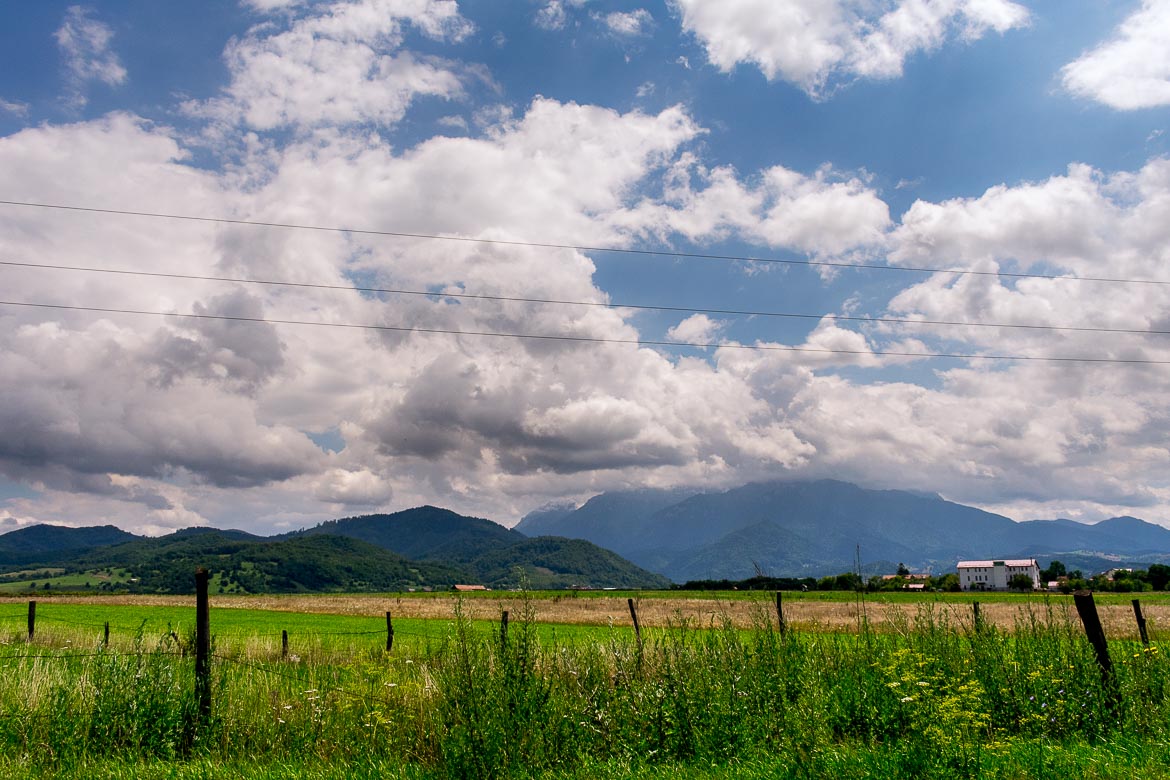
The first stop in your Romania road trip is Targoviste. One-and-a-half-hour drive from Bucharest, this small town in the Wallachia region would probably never make it into any Romania itinerary if there weren’t the events of one cold Christmas Day back in 1989.
When the people of Romania massively protested against dictator Nicolae Ceausescu, the latter and his wife fled Bucharest only to be captured near the city of Targoviste. There, they were held in the military barracks and, after a show trial, executed on Christmas Day.
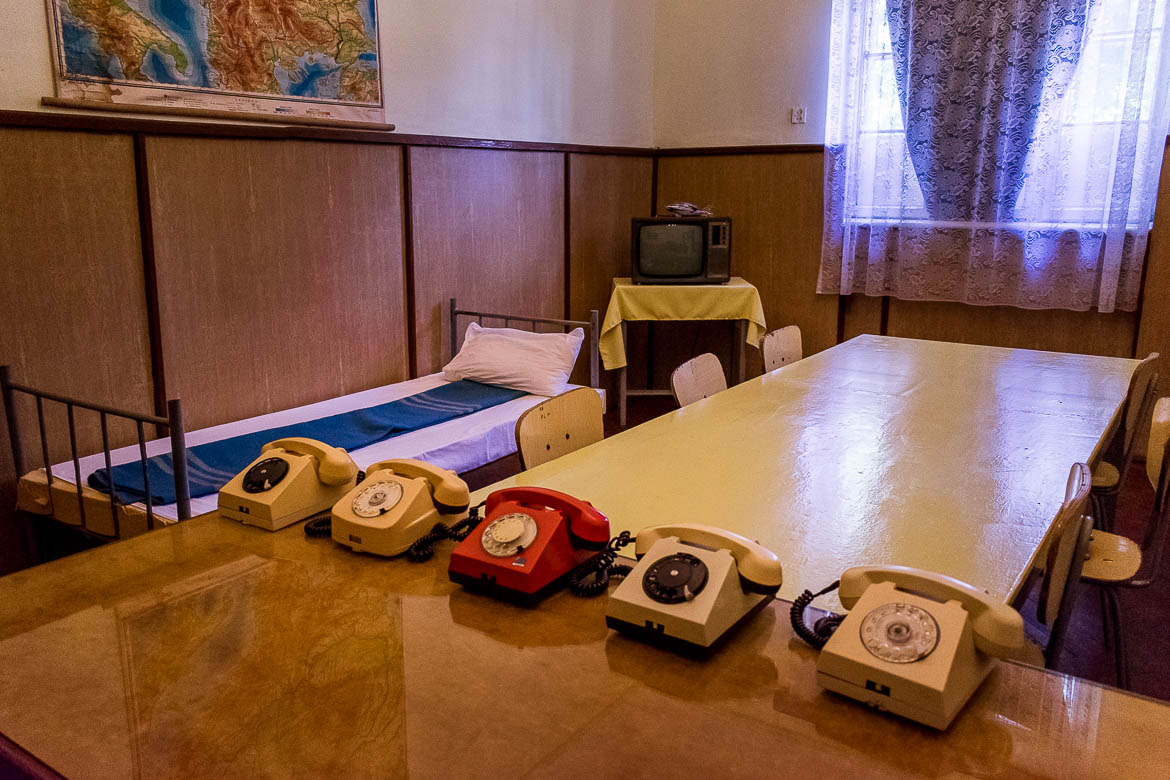
I was only 10 years old when footage of the Ceausescus dead bodies was all over the news. Katerina was too young to remember anything but these images haunted me. How could a 10-year-old kid understand who these people were and why they had to die such a brutal death?
Therefore, standing in the same spot where those bodies had been lying lifeless for the entire world to see almost 30 years ago made us shiver. Apart from the actual execution spot, there are also other rooms on display which narrate in detail the events of 1989 which changed Romania’s history forever.

Our visit to the military barracks in Targoviste was an overwhelming experience that we can’t recommend enough. The building of the military barracks is rather unassuming without proper signage so it’s easy to miss. We had to ask for directions from a couple of locals to find it. However, it’s super easy to spot if you remember that it is very close to Targoviste’s train station.
Google Maps Location: Targoviste Military Barracks. The barracks are currently under restoration works. Check out if the small museum is closed before visiting.

Peles Castle
Situated one hour and a half from Targoviste by car, your next stop is the gorgeous Peles Castle. Leave your car in the parking space and from there, walk along the marvellous path that leads to the castle.
Peles Castle is fabulous in terms of architecture and interior decoration. Surrounded by lush greenery, the castle was built as a summer residence for King Charles I of Romania. Nowadays, Peles Castle is one of Romania’s must-sees and an essential stop for all road trippers. Before your visit, check out the opening hours and buy your ticket online to skip the lines.

Brasov
The last stop of your first day is Brasov, a beautiful city one hour and a half from Peles Castle. Brasov is ideal for spending a couple of days and using the city as a base to explore the surrounding area. Book a room at one of the hotels in the Old Town to enjoy Brasov to the fullest.
Dotted with colourful historic buildings, the city itself is one of the most visited in Romania for a reason. Most of Brasov’s main attractions, such as the Black Church, are situated in the charming Old Town. The cable car at the edge of the city will take you at the top of the dominating Tampa Mountain which is the best place to enjoy a spectacular sunset over Brasov.
With so many fantastic things to do in Brasov, it’s worth adding as many days as you can to explore this fairytale-like city.
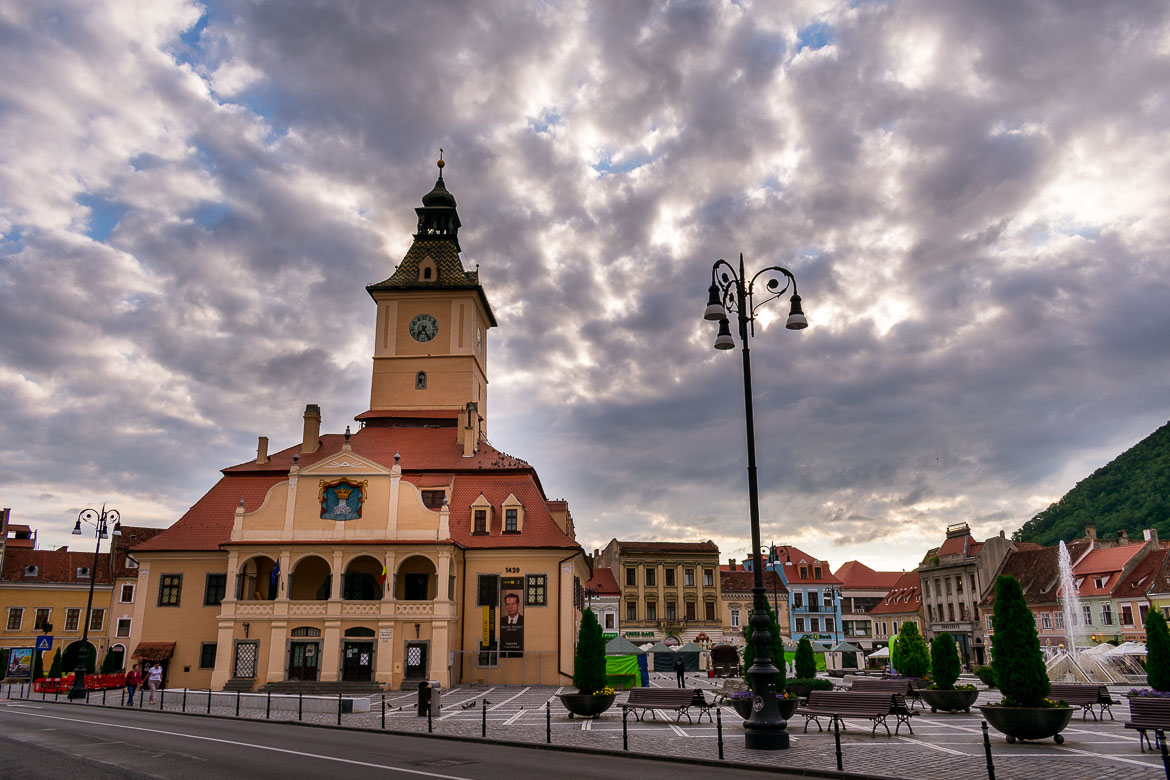
Day 2: Brasov – Bran Castle – Rasnov Fortress – Brasov
Bran Castle
A 30-minute drive from Brasov, your first stop on your second day is probably the most popular of all of Romania’s attractions. This is no other than the famous Bran Castle, the alleged Dracula’s castle. The truth is that Dracula was in no way connected to Bran Castle.
Bram Stoker, Dracula novel’s writer, was inspired from Bran Castle and created the book’s main character. However, the real Dracula, Vlad Tepes, had nothing to do with Bran Castle. On the contrary, the castle was the favourite residence of Queen Marie of Romania, the country’s last and most beloved queen.
This is evident to whoever visits Bran Castle as it is still decorated and arranged the way Marie herself wanted it to be. Dracula or not, Bran Castle is a fascinating place which is well worth a visit. For more information, read our detailed guide about what to see on a Bran Castle tour.

Rasnov Fortress
It would be such a great shame not to visit Rasnov Fortress on your way back to Brasov. A short drive from Bran Castle through amazing natural scenery, Rasnov Fortress is one fine example of how the people of Transylvania managed to turn a medieval fortress into a long-term place of residence.

It turns out that Rasnov was one of the most charming towns we saw during our Transylvania road trip. To get to Rasnov Fortress, which is built at the top of the hill, there is either an uphill path to walk or the Citadel Elevator. The fortress might be on restoration works, therefore, check out if it’s open before visiting.
A ride on the latter lasts two minutes and also offers beautiful views of Rasnov. After taking your time at the beautiful fortress, head back to Brasov for your second and last evening in its enchanting Old Town.

Day 3: Brasov – Rupea Fortress – Viscri – Sighisoara
The next day leave your hotel early in the morning. Travelling by car in Romania means you’ll see gorgeous rural areas along the way. On your way to Sighisoara, the unspoilt green scenery is interrupted only by the silhouette of the occasional fortified settlement perched on top of a hill in the distance.
Transylvania is famous for its large number of existing fortified churches which date back to medieval times. Back then, Transylvania suffered from constant Ottoman invasions. The concept of fortified churches grew out of the need of small villages to protect their populations from those frequent raids.
Only seven of Transylvania’s fortified churches are included in the UNESCO list of World Heritage sites but there are more than 150 of them scattered across the region. On this day, you’re going to visit one of them.
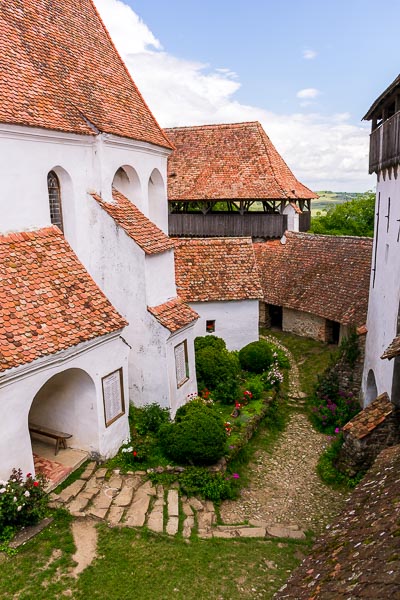
Rupea Fortress
After a one-hour drive from Brasov, your first stop for the day is Rupea Fortress, one of the best castles in Transylvania. When you reach the town of Rupea, start wandering around the charming uphill cobbled streets towards the Citadel. You might need to ask the locals for directions on how to get to the fortress itself.
If you don’t want to climb all the way to the top of Rupea Citadel, there is a ring road which leads right outside the gate of the fortress by car. So, after strolling around the small town for a while, jump in the car and about ten minutes later you will be at Rupea Fortress.

Rupea Fortress enjoys a beautiful view of the amazing green hills surrounding it. Once inside, you can’t get enough of the Citadel’s peacefulness and irresistible beauty. After exploring the castle, enchanted and smiling, set off for your next destination.

Viscri
In order to get to Viscri from Rupea you have to exit the main road at some point. And that’s when the magic happens. The landscape from that point onwards was one of unsurpassable beauty.
Yet the road was terribly broken. Filled with crater-like puddles as it was, we needed to be extra careful not to lose a tyre or worse. At some point along the way, the asphalt was replaced by dirt road. Within about 30 minutes you’ll reach Viscri, an enchanting village listed as a UNESCO World Heritage Site alongside its fortified church.

Viscri is worth a visit not just for its amazing fortified church but, first and foremost, for its overall charm. From the moment you get out of the car, you will be hit by the uniqueness of a place trapped in the past. No wonder why the UK’s King Charles bought and restored a house in Viscri.
There are no paved roads and there are food and water troughs everywhere for the convenience of the various domestic animals which roam freely around the village. We felt as though Viscri actually belonged to them and we were intruders of sorts.
After visiting the fortified church and wandering around the utterly pretty and colourful village, this cute traditional restaurant with local food is a great place to have lunch before you hit the road again.

Sighisoara
A 45-minute drive from Viscri, romantic Sighisoara is your last stop for the day. The small town with the iconic clock tower is ideal for spending the night within the walls of an inhabited fortified medieval town in Europe. We stayed at this boutique hotel with Dracula vibes in the heart of Sighisoara Citadel.
As Sighisoara is a popular destination for a day trip, you’ll have the opportunity to spend the evening exploring Vlad’s Dracula birthplace without the crowds. One of the best things to do in Sighisoara is to climb the Scholar’s Stairs, a wooden covered stairway that leads to the Church on the Hill.

Day 4: Sighisoara – Biertan – Medias – Sibiu
Biertan
Start your day early in the morning to catch some shots of Sighisoara from the top of its iconic Clock Tower before your next stop. This is the perfect place to enjoy panoramic views of the medieval town.
A short drive from Sighisoara, Biertran is home to yet another impressive UNESCO fortified church. Wandering around the quaint village, you’ll come across colourful houses, running streams and the occasional duck or hen strolling around in the most carefree way.

Medias
On your way to Sibiu make a stop at Medias, the second largest city in Sibiu County and home to one of the best-preserved historical centres in Romania. Start your walk from the fortified church of St. Margaret. Unlike Viscri and Biertan, the fortified church at Medias has an aura of neglect and we didn’t really like it to be honest. The fact that there were cars parked within its walls didn’t help much either.

Keep walking towards the Old Town’s main square, Piaţa Regele Ferdinand I, before getting lost inside the colourful narrow streets surrounding it. In our case, we don’t know if either the bad weather or the fact that we had already seen some of Transylvania’s prettiest towns was to blame, but, overall, we weren’t impressed by Medias.
We didn’t hate it but we didn’t love it either. However, it’s perfect if you want to stretch your legs from driving and have a quick lunch.

Sibiu
A one-hour drive from Medias, Sibiu is your road trip base for the next couple of nights. One of Romania’s major cultural hubs Sibiu is a vibrant city that also attracts road trippers as it’s close to the Transfagarasan Road. Ideally, book a hotel in the historic centre to take in the unique ambience of Sibiu Old Town.
Spend the rest of the day walking around the Old Town and discovering some of Sibiu’s main attractions. The watchful rooftop eyes, the bridge of lies and the gorgeous Strada Nicolae Balcescu are only a few of the things to see in Sibiu.

Day 5: Sibiu – Corvin Castle – Sibiu
Corvin Castle
On day five, it’s time to explore yet another Transylvanian castle. The one-and-a-half-hour drive from Sibiu to Corvin Castle is dull compared to the routes of the previous days as it’s along a grey and boring motorway for the most part. Hunedoara, the industrial city where the castle is located, is equally colourless.
However, Corvin Castle itself is a sight for sore eyes. It is indeed the kind of medieval castle that could be used as a setting for a fairy tale or a Game Of Thrones episode. With its dramatic drawbridge and the massive inner courtyard, the 15th-century castle is considered one of the largest in Europe.
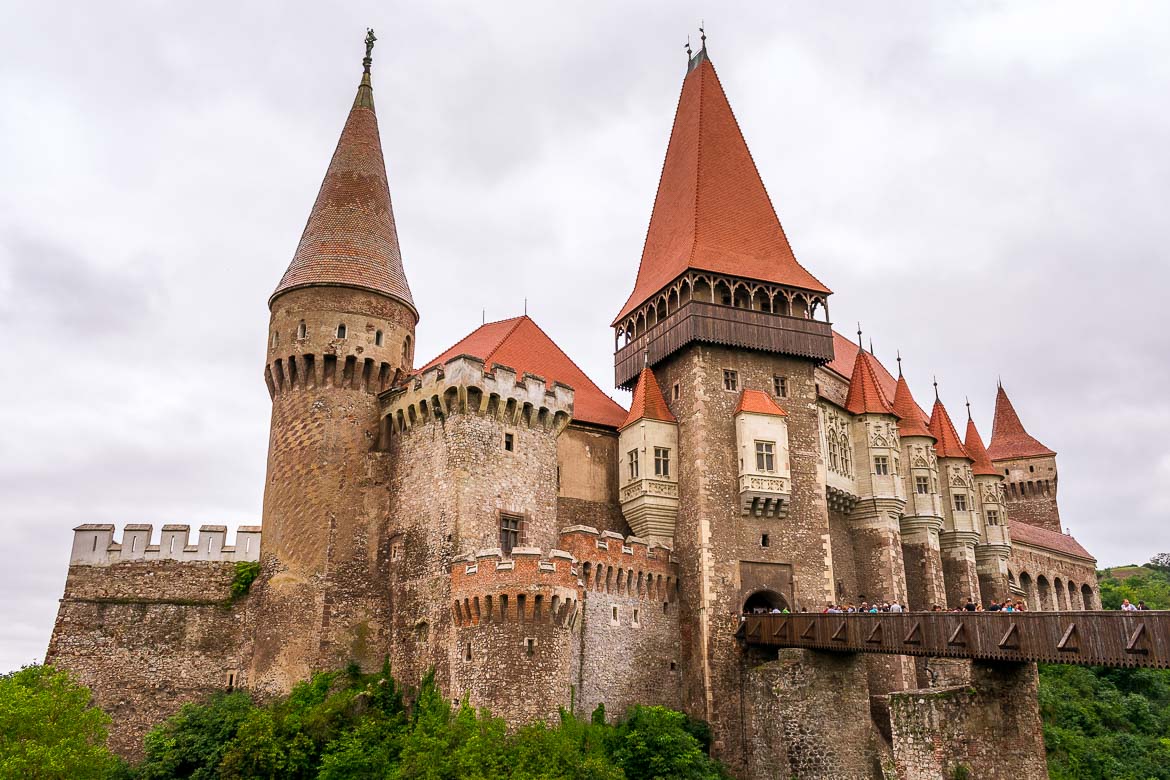
After exploring this magnificent castle, if you have more time to spend, make a stop at Alba Iulia before heading back to Sibiu. In our case, we decided to drive back and spend more time taking in the elegance and charm of Sibiu instead.

Day 6: Sibiu – Castelul de Lut Valea Zanelor – Transfagarasan Road
Castelul de Lut Valea Zanelor
So the big day has come. Transfagarasan Highway is the indisputable highlight of our Romania itinerary. Leave Sibiu very early in the morning and make a tiny detour to visit the somehow hobbit-like Castelul de Lut Valea Zanelor before hitting the most beautiful highway in Romania.
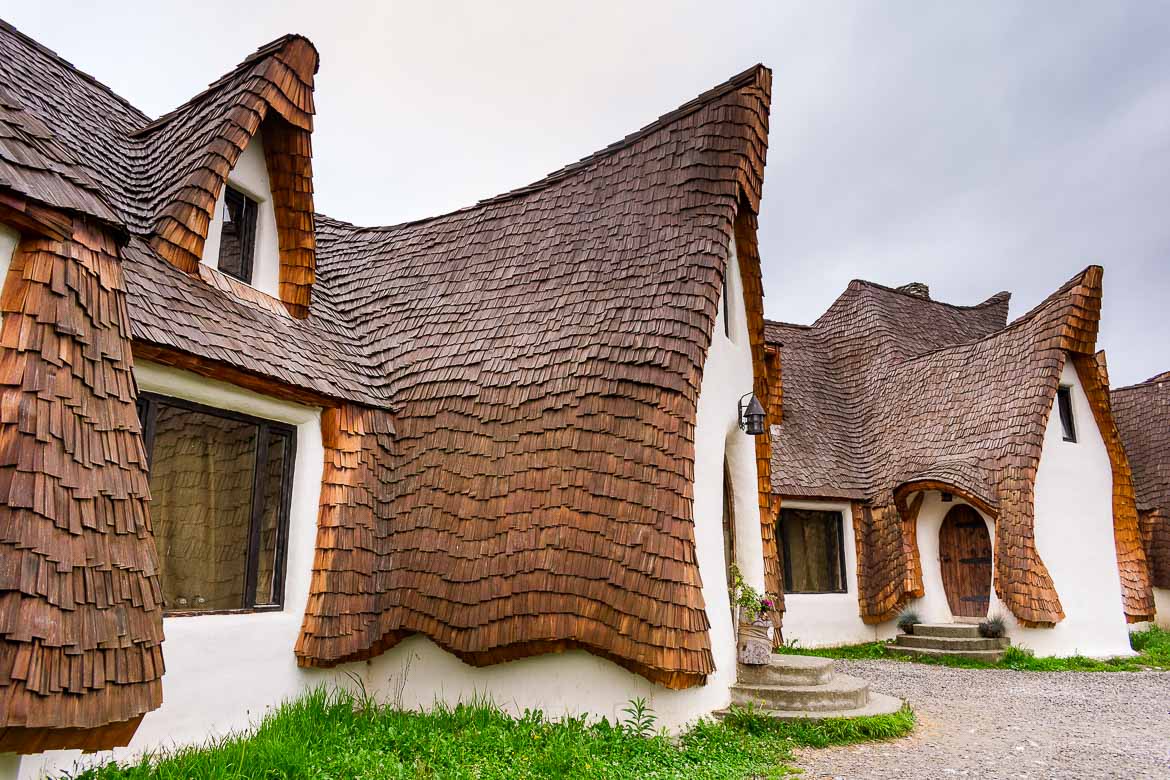
Contrary to what we thought, the Clay Castle, as it is called, is a brand new 10-room hotel and restaurant complex built exclusively from natural materials rather than an old restored one.
There is an entrance fee to enter and have a walk around the charming castle and the surrounding natural space. It’s a serene landscape which features tall trees and running streams. With the entrance fee, you get a consumption voucher that you can use in the onsite restaurant. For more information, visit the Clay Castle’s website.

Transfagarasan Road
After the quick stop at Clay Castle, get back in the car for the best part of your Romania road trip. The Transfagarasan Road was constructed during the Ceausescu Era.
It became famous when the British TV show Top Gear named it the best road in the world. The Transfagarasan is indeed one of the most scenic routes in the world as it literally winds its way through scenery of incredible beauty in the heart of the Fagaras Mountains.

Apart from the road itself, other sites not to be missed along the Transfagarasan route include Balea Lake, Vidraru Dam and many more. Keep in mind, you’re going to spend a full day on the road, so plan to spend the night in Corbeni, a small town near the southern end of Transfagarasan, rather than keep driving towards Bucharest.
We booked a room in the nearby Casa Lazaroiou in Bucsenesti and we can’t recommend it enough.

Day 7: Bucsenesti – Bucharest
After a long and relaxing sleep, it’s time to drive the last part of the Transfagarasan Highway. The latter isn’t even remotely as interesting as the part of the previous day though. The Transfagarasan ends in the town of Bascov. From then on, it is a rather two-and-a-half-hour dull drive to the city centre of Bucharest.
You might feel overwhelmed as you’ll suddenly find yourselves in the heart of a big city after having spent so many days in the stunning Romanian countryside. However, Bucharest is ideal for relaxing from driving before going back home. Add to your itinerary at least one extra day at the Romanian capital to visit some of the Bucharest attractions, such as the famous Parliament building.

Parking in Romania
Parking was never an issue during our Romanian road trip. We could always find free parking very easily. As a general rule, keep in mind that there are parking spaces with a small fee in the vast majority of the most popular Romanian tourist attractions.
As far as towns and larger cities are concerned, you can park for free on side streets. However, when you see lines drawn on the road look for a nearby parking metre to get your parking ticket. Alternatively, someone will approach you and you will pay the parking fee to them.
Parking in Romania is very affordable. In most towns, you are supposed to pay a small amount. In some of the smaller towns, such as Rasnov, Viscri and Targoviste, parking was entirely free of charge. Most castles and attractions we visited had paid parking lots. The most expensive was at Bran Castle but you probably won’t spend more than a couple of hours there anyway.

Regarding Bucharest, we can’t tell for sure, but it seems that parking as well as heavy traffic can be a nuisance. We would advise you against using a car in the Romanian capital. Bucharest boasts a very good public transport system and it’s a totally walkable city as well.

Final Thoughts About Our Romania Road Trip
We absolutely loved our Romania road trip and we can’t recommend it enough. Romania is a country of superb natural beauty waiting to be discovered. Although we visited during the high season (July) and there were loads of Romanian holiday-makers everywhere, foreign travellers were scarce.
We honestly believe that a trip to this beautiful country is absolutely worth adding to your bucket list. We leave you with a mini survival guide but you can always refer to our other Romania articles for more information. As always, we will be more than happy to respond to any inquiries you may have. So, see you in the comments below!
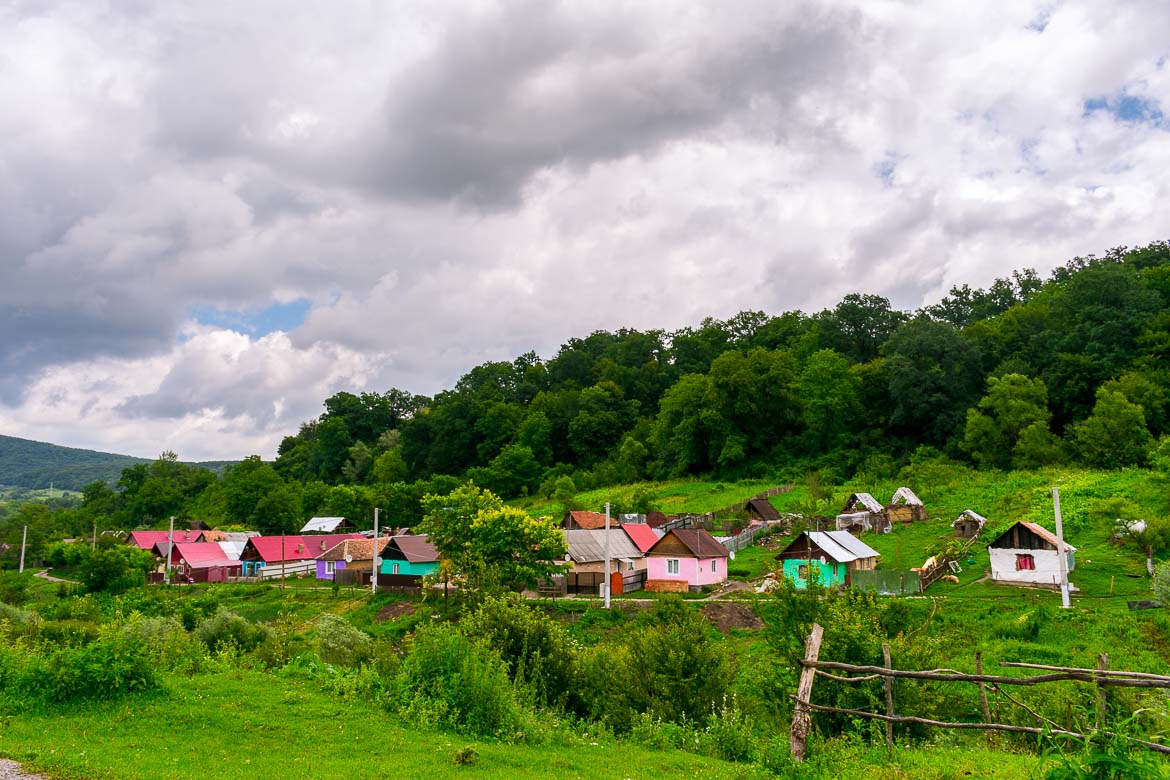
Travel Tips For Your Romanian Road Trip
CURRENCY: Leu (plural: lei)/RON
LANGUAGE: Romanian. Do not assume that everyone speaks English, especially in smaller towns.
FOOD: The traditional Romanian cuisine is meat-based. Vegetarians may have a hard time finding something different to eat every day. We, for one thing, got tired of fried cheese, no matter how much we loved it.
WEATHER: We visited in July and the weather went from super chilly up in the mountains to unbearably hot in Bucharest. So, even if you plan a Romania road trip during summer, make sure you pack a light, preferably waterproof, jacket.
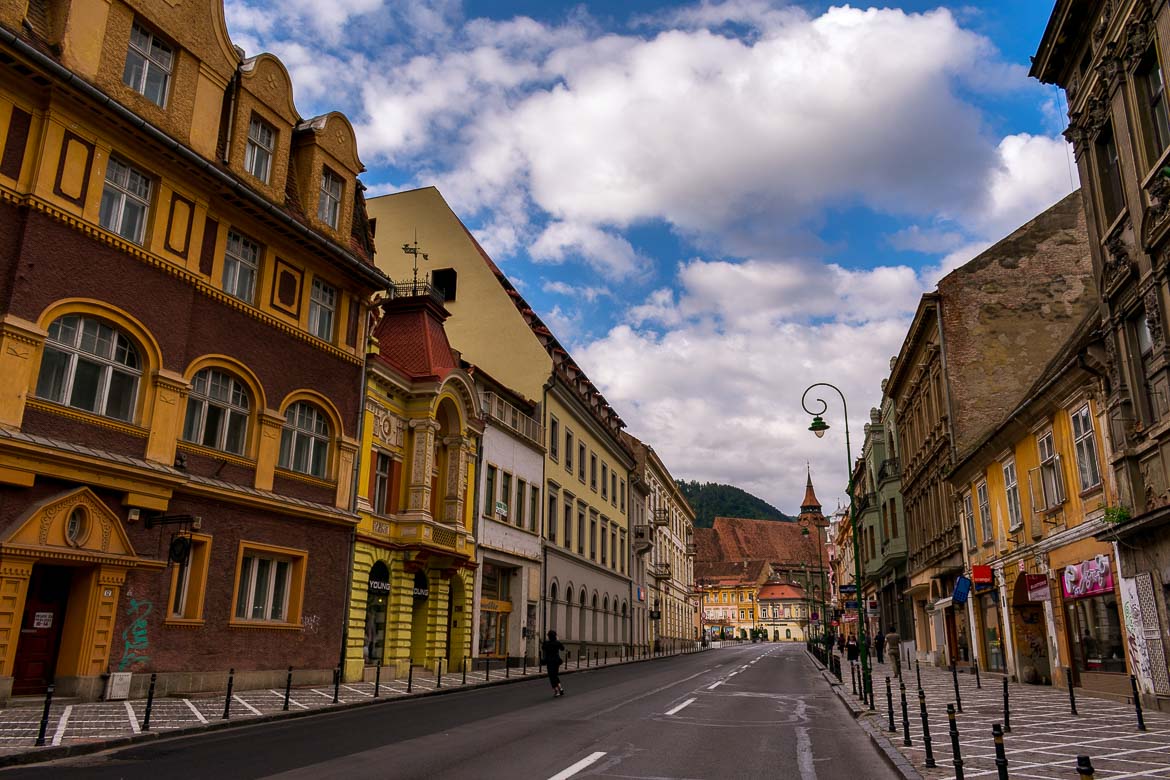
WORDS & EDITING: Maria
IMAGES: Katerina

5 Comments
Your blog has become an indispensable resource for me. I’m always excited to see what new insights you have to offer. Thank you for consistently delivering top-notch content!
Thanks for your comment!
Pingback: 10 Days in Europe: 25 Magical Itineraries for Your 10-Day Europe Trip! - It's Not About the Miles
We are moving to Bucharest with my husbands job soon and your inspiring road trip will definitely be something we plan to replicate soon. Thank you for sharing your honest, detailed itinerary.
Hey Sheridan, thanks so much for your kind words! We’re sure you’ll enjoy Romania!